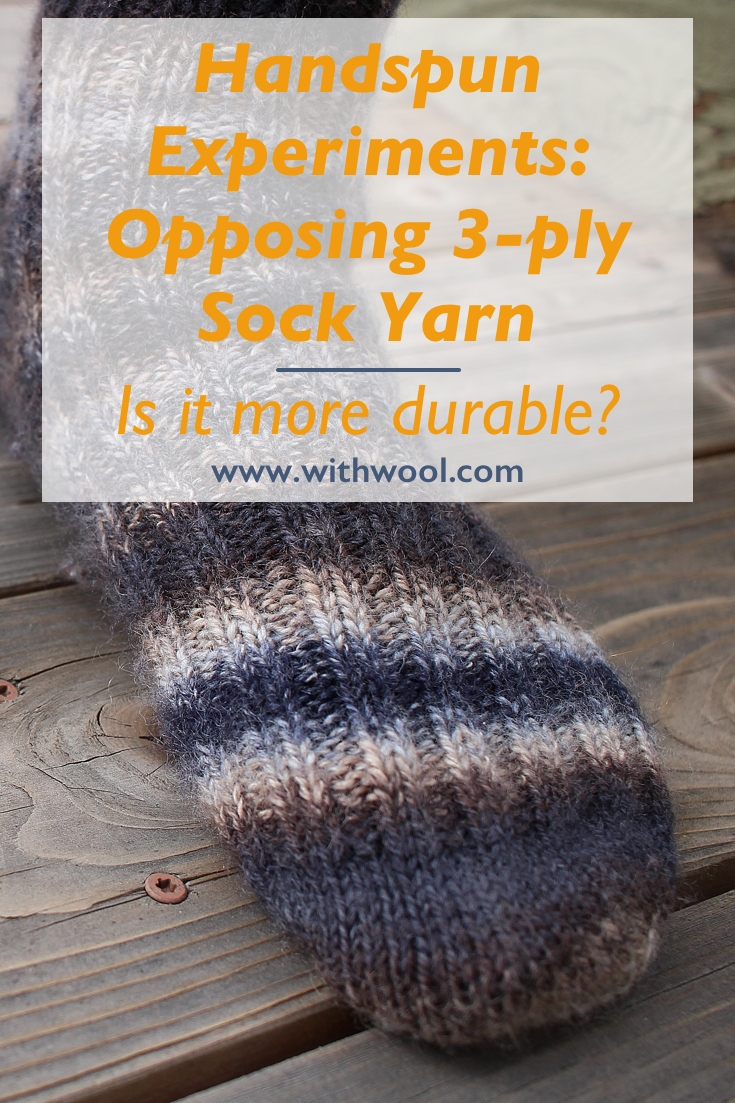Handspun Experiments: Opposing 3-ply Sock Yarn
/The end goal for this yarn was always going to be a pair of socks. So I followed the internet’s advice which recommended spinning a high-twist opposing 3-ply construction. What makes this construction special is that one ply is spun in the opposite direction which is supposed to add elasticity and increased durability. I started with 8 oz of Louet Northern Lights Top, color Blue Spruce, which is space-dyed and a blend of similar wool types. It’s not as soft as Merino, but seemed much more durable.
I split the top lengthwise into 3 more or less equal sections for each of the 2 skeins. I spun each ply with a fairly firm twist to stand up to the extra wear and tear of socks. 2 of the plies had Z-twist, and 1 had S-twist. Plying a balanced yarn was a trial since the S-twist skein took in even more twist and would kink up when given half a chance. Next time, I’ll experiment with putting less twist on the opposing ply and make up for it during plying. You can read more about how I spun the yarn here.
I didn’t photograph the pair (find all the knitty details here) when I finished them, and the socks got about a month of regular daily wear before camera time. While spinning the yarn, I was worried about holes. Now I’m pretty sure the socks will felt before a hole even thinks about opening up. The stitches on the bottom of the sole have already started felting together and loosing some of their stretch. The stitches on the side and top are still distinct and flexible though. Any eventual repairs I have to make will probably be more difficult because of the felting, but at least I’ll notice the holes before they get too big.
The jury is still out on whether or not the opposing ply yarn construction is more durable than a traditional 3-ply. I will keep you updated though as things develop. And when I spin a traditional 3-ply as sock yarn.
There’s one other skein of opposing 3-ply sock yarn stashed away for me. This skein is my first attempt at an opposing ply sock yarn. It’s a true fingering weight spun from Falkland top. Once I’m ready to whip up another pair of vanilla socks, I’ll give this yarn a try. I can’t be the only one without handspun socks in this house after all.






